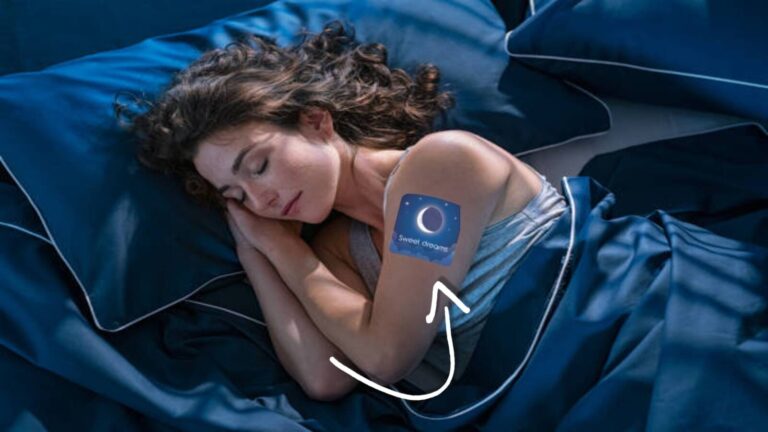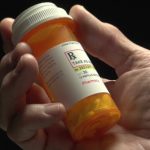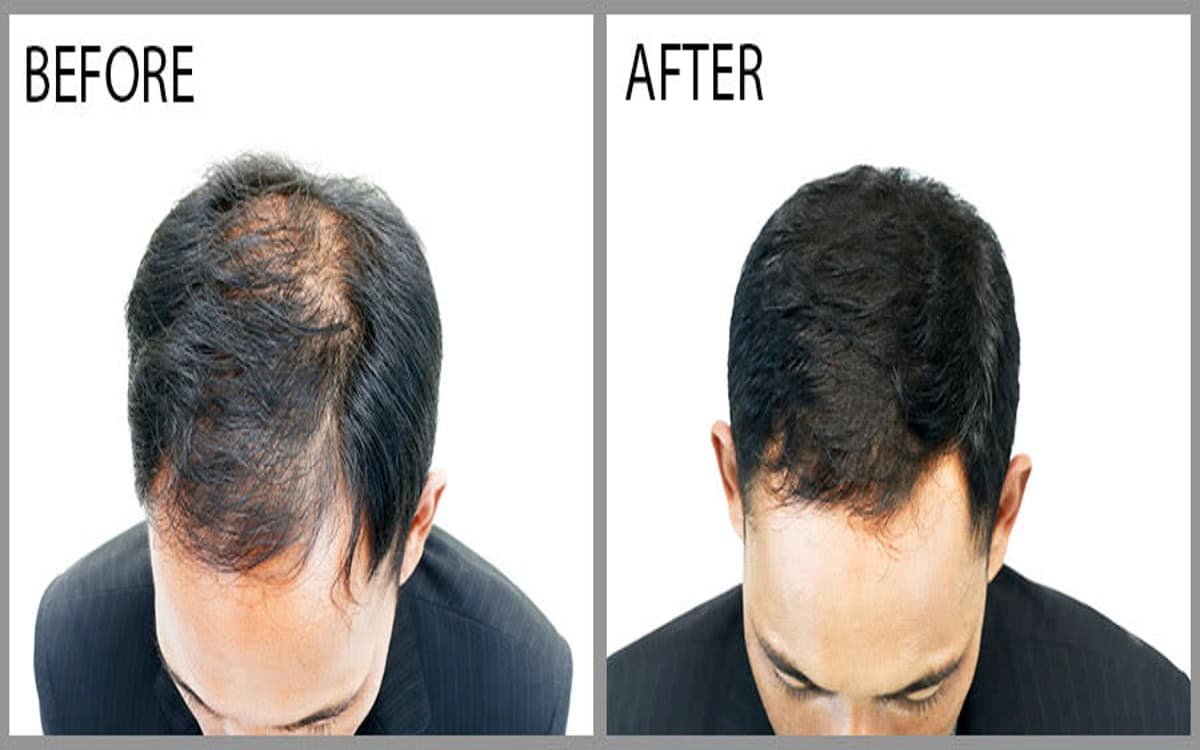
Male pattern baldness can significantly impact self-esteem, but modern science offers hope. This article explores the most effective hair regrowth treatments for men, from FDA-approved medications to cutting-edge therapies.
We’ll guide you through options that not only combat hair loss but also restore confidence. Discover how these treatments work and which might be best suited for your unique situation.
However, the good news is that with consistent use of the right hair regrowth treatments, it is possible to stop and even reverse hair loss.
Key Takeaways:
- Effective hair regrowth treatments can restore confidence in men.
- Options include medications, topical treatments, and natural remedies.
- Early intervention yields the best results.
- Consult a professional for personalized advice.
- Consistency in treatment is crucial for success.
A. Brief overview of hair loss in men
Hair loss among men, also known as male pattern baldness or androgenic alopecia, is extremely common. It’s estimated that more than 50 million men in the United States suffer from this condition.
For many men, hair loss starts with a receding hairline or thinning crown which gradually worsens over time. While genetics play a major role, factors like age, hormones, and family history can also influence hair loss. Stress, nutritional deficiencies, medications, and chronic illnesses have also been linked to excessive hair shedding or impaired regrowth.
If left unchecked, male pattern baldness tends to progress through 3 main stages:
- Stage I – Light hair loss characterized by a receding hairline and mild hair thinning
- Stage II – Moderate hair loss with a more prominent bald spot on the crown and wider areas of thinning
- Stage III – Severe hair loss with only a horseshoe rim of hair remaining around the back and sides of the scalp
The good news is, early intervention can help stop hair loss progression and turn it around before excessive damage is done.
B. Importance of finding the best hair regrowth treatment
Seeking an effective hair regrowth treatment at the first signs of male pattern baldness is crucial for several reasons:
- It helps stimulate stronger hair production and minimize shedding before follicles shrink too much, improving your chances of regrowth.
- It prevents further progression of hair loss which is much harder to reverse once more hair follicles die off.
- It allows you to regain fuller, thicker hair and restore your youthful appearance and self-confidence.
However, with so many hair loss products and treatments floating around, finding one that works can feel overwhelming initially. The key is to understand the science behind common hair regrowth actives and how to use them for best results.
The right treatment also depends on factors like your stage of hair loss, age, medical history, convenience, and budget. Later sections will cover all the essential information you need to find your perfect match.
First though, having a strong grasp of what causes premature hair loss and how it progresses is vital when evaluating your treatment options…
5 Top Best Hair Loss Supplements That Deliver Real Result
| Image | Product | Detail | Price |
|---|---|---|---|
 | Folital: |
| Check Price |
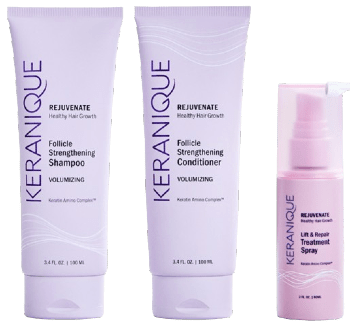 | Keranique: |
| Check Price |
 | Folexin: |
| Check Price |
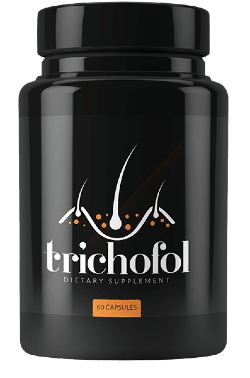 | Trichofol: |
| Check Price |
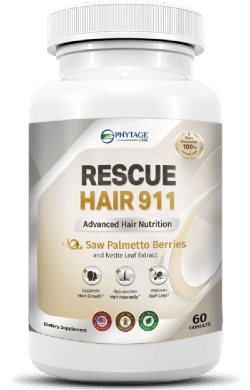 | Rescure Hair 911 |
| Check Price |
C. Purpose of this article
The purpose of this all-encompassing guide is to:
- Help men understand the science behind premature hair loss
- Uncover the most effective hair regrowth options backed by strong research
- Provide insider tips to maximize treatment results
- Offer unbiased comparisons of popular regrowth solutions
- Answer common questions to simplify the search for the right treatments
Whether you wish to stop any further hair thinning, regrow your receding hairline, stimulate growth on bald spots, or regain density from long-term loss, this article will explore scientifically-proven treatments tailored to your unique needs and goals.
II. Understanding Hair Loss in Men
To determine the ideal treatment plan for stimulating new hair growth, it’s important to first understand what causes hair loss in men, the distinct patterns it follows, and how to accurately assess the extent of damage.
A. Causes of hair loss in men
While androgenic alopecia or male pattern baldness (MPB) is frequently blamed primarily on genetics, several other factors can actually trigger hair loss or quicken its pace. These include:
Hormonal Factors
- Dihydrotestosterone (DHT) – This is a hormone metabolized from testosterone. When testosterone levels are high, more DHT binds to hair follicle receptors, causing them to shrink and stop producing new hair over time.
- Age-related hormone changes – As men get older, they experience drops in hormones like progesterone and estrogen allowing testosterone and DHT to dominate and accelerate loss.
Family History & Genetics
- Men whose fathers or brothers suffered premature hair loss are more genetically predisposed to experiencing it themselves.
- Certain gene variants like the AR gene means higher sensitivity to DHT and faster hair follicle miniaturization.
Stress Levels
- Stress causes elevated cortisol which can prolong the hair growth cycle’s resting phase and impair regrowth.
Medical Conditions & Medications
- Thyroid disorders, autoimmune diseases, infections, etc. can trigger excessive shedding.
- Certain drugs like blood thinners, antidepressants, cholesterol drugs may list hair loss as a side effect.
Nutritional Deficiencies
- Low vitamin D, zinc, iron, vitamin B12, or protein can hamper follicle health and growth cycles.
Poor Scalp Care
- Inadequate hair brushing/combing, harsh chemical treatments, tight hairstyles increase shedding.
While genes certainly make you more vulnerable to premature hair loss, lifestyle measures can help moderate these to some degree as we’ll explore later. Understanding the predominant causes is key to finding treatments that specifically target and counteract them.
B. Types of male pattern baldness
Male pattern baldness can progress in one of these common patterns:
I. Receding Hairline
This refers to hair loss at the temples and frontal scalp region resulting in an ‘M” shaped hairline. It tends to be the early sign of MPB for most males.
II. Thinning Crown
The first indication is excessive shedding leading todecreased density on the top and crown portion of the scalp. This may eventually progress toa bald spot.
III. Combination Hair Loss
This involves simultaneous recession at the hairline as well thinning hair on parts of the crown and top of head. It becomes harder to conceal.
IV. Diffuse Hair Loss
General thinning and loss across the entire scalp eventuallyleads to a see-through appearance. It indicates very advanced androgenic alopecia.
Identifying where you fall on this spectrum of types and stages can help determine suitable treatments for regrowth. The earlier it’s caught, the better your results.
C. Identifying signs of hair loss
Being vigilant and tracking early signs of thinning hair or a compromising hairline can make a world of difference. Look out for:
- Excessive hair accumulation on your comb or in the shower drain
- An increasing number of visible hairs on clothing and furniture
- A wider part line or decreasing density on the crown/frontal scalp
- New growth that is finer and thinner than existing hair
- Sudden balding spots that keep expanding
- Gradual recession of the hairline
- A rounder hairline losing its sharp corners or edges
Thinking you may be experiencing the first signs? The next step is understanding factors to help narrow down effective hair regrowth options…
How to Regrow Your Hair (UPDATED VITAL INFO)
III. Factors to Consider in Choosing the Best Hair Regrowth Treatment
With so many products and treatments aiming to combat hair loss, making the right choice can get confusing. Here are the most important factors to consider when selecting the best hair regrowth solution for your needs:
A. Safety and effectiveness
The #1 priority is choosing an FDA approved, clinically-tested treatment that works safely with minimal side effects. Go for established brands with years of reputable research supporting efficacy for regrowth.
B. Ingredients and mechanisms of action
Look for treatments using active ingredients with proven hair growth mechanisms such as:
- Minoxidil – Vasodilator that improves blood flow to follicles
- Finasteride – Inhibits DHT responsible for shrinking follicles
- Redensyl – Helps hair follicles stay in growth phase longer by targeting proteinkinases
- Biotin – Improves keratin infrastructure to strengthen strands and prevent breakage
Understand how the ingredients target causes specific to your hair loss pattern for customized results.
C. User reviews and testimonials
While clinical trials provide controlled environment testing, user reviews offer real-world perspectives on long-term treatment efficacy. Check for consistent positive reviews and dramatic before/after photos documenting great success. However, moderate reviews occasional negative ones too.
D. Cost and value for money
Go for treatments offering solid value backed by proven results, not just clever marketing. Calculate cost per month for continued use against potential expense of restorative surgery later. Lifetime treatment warrants better savings over high short-term value.
E. Treatment duration and convenience
Consider expected duration of use, optimal frequency/timing, plus formats like oral pills, foam, shampoo, comb devices etc. for convenience integrating into lifestyle. Regrowth can take 2-4 months so commit to consistent applications. Automate refills.
Now that you know which factors to analyze treatments against, next we reveal prime contenders delivering best hair regrowth results for most men…
IV. Top Hair Regrowth Treatments for Men
When it comes to proven solutions for stimulating new hair growth, these 4 treatment categories reign supreme thanks to abundant research on safety and efficacy:
A. Minoxidil
Minoxidil is famous for being the first FDA approved ingredient for treating male pattern baldness. Here’s a deeper look:
1. How minoxidil works
Minoxidil is a vasodilator that opens up blood vessels to improve blood flow and nutrient delivery to shrunken hair follicles, reviving them to stimulate growth.
2. Dosage, application, and potential side effects
Minoxidil treatments typically come as a 5% topical solution for men and must be applied twice daily to balding areas. This may be increased to 10% solution for stubborn areas under doctor consultation.
While it causes minimal side effects like skin/scalp dryness, irritation or acne when used as directed, mixing with other hair loss treatments should be confirmed with a doctor.
3. Success rates and user experiences
In clinical studies, over 50% of men who used minoxidil daily reported visible hair regrowth in 3-6 months with slower future loss. Significant improvements are seen in treating crown and vertex bald spots. Most users note visible decrease in daily shedding by first month itself.
For optimal results, combining minoxidil with hair thickening shampoos/supplements is encouraged. Being the most accessible OTC solution, minoxidil proves a practical starting point to gauge body response before considering prescriptions if unsatisfied.
B. Finasteride
Finasteride is a popular oral prescription targeting hormonal hair loss causes. Let’s analyze further:
1. Mechanism of action and its effectiveness
Finasteride works by blocking 5-alpha-reductase, the enzyme responsible for converting testosterone to DHT implicated in 95% of male pattern hair loss cases. This shrinks follicles over time.
Reduced scalp DHT levels by finasteride allow hair follicles to recover normal sizes and cycles, making way for new growth.
2. Considerations for usage and potential side effects
As a strictly controlled substance requiring bloodwork, analysis and supervised use, finasteride poses some precautions:
- Not intended for use in women due to birth defect risks if handling broken tablets
- Potential sexual side effects like low libido, erectile dysfunction in under 3.7% of men as per research
- Shedding or slowed results may occur in initial 2-4 months before regrowth
- Daily 1mg oral tablet continued long-term for sustained benefits
3. Comparative analysis with other treatments
Unlike topical solutions like minoxidil that stimulate new growth, finasteride focuses on preserving existing hair first by preventing further loss from DHT. This dual action of saving remaining strands while thickening thinning areas makes it more powerful and commonly prescribed.
Being oral, it targets hair loss internally addressing root causes for more complete reversal and visible density if tolerated well. Hence combination therapy of finasteride + minoxidil tends to deliver best results.
C. Low-Level Laser Therapy (LLLT)
LLLT is an emerging treatment option indicated in male pattern baldness:
1. Explanation of LLLT and its impact on hair regrowth
LLLT devices deliver therapeutic levels of soft laser light below skin level to stimulate cellular activity. The photonic energy triggers hair follicles into active growth phase, preventing dormancy. It works at a mitochondrial level to:
- Boost ATP production essential for protein synthesis
- Improve blood flow and cell metabolism
- Reduce inflammation
- Upregulate growth factors
This creates optimal conditions for reviving dormant follicles and enhancing thick, healthy regrowth.
2. Devices available and usage instructions
Handheld LLLT hair comb devices are cleared by the FDA for treating androgenic alopecia. These combs must be used as follows for best outcome:
- Part hair section-by-section so laser light penetrates scalp
- Start at hairline and work back to crown
- Comb each section 6-15 times based on device guidelines
- Use 3 times a week for at least 16 weeks
3. Studies supporting its efficacy
Multiple clinical trials reveal LLLT stimulates significant hair regrowth comparable to medication:
- Over 35% subjects reported over 51% more terminal hair density in 16 weeks.
- Increased number of follicles grew from active anagen phase and thicker strands.
- Noticeably reduced hair loss after first 8 weeks enabling regrowth.
Thus LLLT brings excellent results without needing drug prescriptions or interference making it the cutting-edge treatment option.
D. Hair Growth Supplements
Specialized nutritional supplements boost hair health from inside out. Let’s analyze key ones:
1. Overview of popular supplements (e.g. biotin, saw palmetto)
Targeted hair wellness supplements often feature:
- Biotin: Essential B7 vitamin that aids keratin production for hair protein
- Saw Palmetto: Herb that blocks DHT levels similar to finasteride
- Vitamin D: Regulates hair cycle and growth factors
- Iron: Improves microcirculation to follicles for nourishment
- Zinc: Boosts tissue growth and repair
- Silica: Increases follicle volume and density
2. Scientific backing and potential benefits
Supplement blends are well researched to treat nutritional causes of hair fall like deficiencies, poor diet, stress etc. Benefits include:
- Strengthens hair strand structure to prevent breakage
- Accelerates healthy growth cycles and new hair production
- Slows natural loss process to retain thickness
- Creates a probiotic scalp environment
3. Considerations and warnings
Despite being side effect free, some precautions apply:
- Consult doctor if on other long-term medications
- Give 90+ days for noticeable growth results
- Ensure dosage guidelines are strictly followed
- Seek customized blends for individual needs
As certain nutrient deficiencies manifest before physical signs appear, using specific hair supplements under medical guidance boosts treatment efficacy.
V. Lifestyle Changes to Support Hair Regrowth
While active treatments trigger new hair growth, certain lifestyle measures help maintain optimal scalp health and follicle activity boosting their effectiveness long-term:
A. Importance of a balanced diet and nutrition
Consuming a wholesome, nutritious diet ensures your hair receives essential macro and micronutrients vital for healthy structure and growth cycles including:
Protein – Hairstands are predominantly made of a protein called keratin. Inadequate protein causes brittle, weak strands prone to breaking and impaired regrowth.
Iron – Iron enables oxygen-filled red blood cells to nourish follicles. Low levels lead to thin, patchy hair.
Zinc – Zinc stimulates hair tissue growth and cell repair. Deficiency is linked to alopecia and thinning hair.
Fruits, nuts, eggs, fatty fish, beans, meat provide critical proteins, vitamins, minerals to maintain thickness.
B. Managing stress and its impact on hair loss
Chronic stress spikes cortisol increases which disrupt normal hair growth cycles by prolonging the shedding phase and delaying new growth. Stress management becomes vital:
Relaxation practices – Yoga, meditation, deep breathing lower stress for hair balance. Making time for enjoyable hobbies also helps.
Massage – Gentle scalp massage increases blood flow to hair follicles nourishing them while relieving tension.
Adaptogen supplements – Herbs like ashwagandha, ginseng, Rhodiola help moderate cortisol levels.
C. Scalp care routines and their significance
Regular scalp hygiene, cleansing and stimulation optimizes the environment for unobstructed hair growth.
Shampooing – Rotate shampoos with nourishing ingredients. Massage when washing.
Conditioning – Hydrate hair and scalp without residues using lightweight conditioners.
Scalp brushing – Use boar bristle brush 2-3 times a day to distribute natural oils along the follicle surface.
In combination with primary hair regrowth treatments, supportive lifestyle measures magnify and sustain their effects long-term.
VI. Professional Interventions for Hair Regrowth
For those unsatisfied with results from non-invasive methods alone, or those with advanced hair loss, surgical hair restoration or platelet-rich plasma therapy are effective options under doctor supervision.
A. Hair transplant surgery
Hair transplants involve harvesting active hair follicles from thicker scalp areas and transplanting them to thinning or balding regions.
1. Procedure details and success rates
Modern FIT techniques allow seamless transplantation of thousands of hairs in few hours with 90-95% success and minimal scarring if performed by a respected surgeon.
2. Considerations before opting for surgery
- Better for smaller balding areas – extensive hair loss still requires medication
- Combination with prescription meds may be suggested for optimal results
- Multiple sessions areoccasionally needed for satisfactory density
- Recovery timeframe before seeing full results spans 8-12 months
- Strict adherence to post-procedure care regimen is vital
So while hair transplants deliver permanent hair regrowth restoring confidence, medications preserve and maximize results.
B. Platelet-Rich Plasma (PRP) Therapy
A newer treatment approach involves reinjecting patient’s own enriched plasma into scalp.
1. How PRP works for hair regrowth
Concentrated PRP isolated from blood contains 8x higher growth factor levels that stimulate follicles for faster, thicker regrowth when injected into scalp. Skin cell multiplication and tissue remodeling effects also help.
2. Efficacy and potential side effects
Over 60% users note significant reduction in hair fall starting 2 months post-PRP therapy with thicker, stronger regrowth over 3-6 months. Minimal side effects like injection pain, redness, numbness, headache may occur if performed safely by certified technician.
As a nonsurgical approach, PRP complements conventional treatments well if hair loss is not yet advanced without impeding everyday activity.
Conclusion
The journey to hair regrowth can be transformative for men struggling with baldness. This article delves into the most promising treatments that are helping men reclaim their hair and self-assurance.
From time-tested solutions to innovative approaches, we’ll explore options that cater to different stages of hair loss and lifestyle preferences.
Regaining lost hair can significantly boost your confidence. This guide details the best hair regrowth treatments for men, including proven medications, topical solutions, and natural approaches to help you achieve a fuller head of hair.
VII. Tips for Maximizing Results from Hair Regrowth Treatments
To ensure the time and money invested in your chosen hair restoration solution delivers maximum regrowth and permanence, follow these best practice tips:
A. Consistency in treatment application
Being diligent with daily applications in consistent intervals optimizes results as intermittent use tricks follicles into shedding just-regained hair.
Easy integration into routine, setting phone reminders, automating refills etc. improves compliance.
B. Monitoring progress and adjusting treatment if necessary
Schedule regular check-ins every 4 to 6 months to assess treatment efficacy through photos, expert evaluation etc.
If inadequate progress or standstill noticed beyond initial period, additional interventions like microneedling, lasers or supplementary hair wellness supplements may be incorporated to boost effects.
C. Consulting with a healthcare professional
Seeking customized guidance from a hair restoration physician or trichologist allows personalization with expert input on genetic, lifestyle factors influencing combination therapy.
Bloodwork analyzing vitamin deficiencies, hormone levels etc. helps detect issues impairing optimum response. Ongoing support maximizes treatment journey success.
With disciplined, proactive tracking and refinement of hair support strategy, remarkable transformation is achievable.
VIII. Frequently Asked Questions (FAQs)
Have some lingering questions about using medical treatments to stimulate hair regrowth? Here are science-backed answers to commonly asked ones:
Q: Do hair regrowth treatments like minoxidil and finasteride work for receding hairlines?
A: Yes, clinical trials using finasteride and minoxidil reveal significant improvements in regrowing hairline and temples for over 50% men within 6-9 months if applied correctly. Consistency is key.
Q: What is more effective – oral or topical hair loss treatments?
A: Systemic oral treatments like finasteride tablets can target hormonal causes leading to follicle miniaturization more comprehensively restoring thickness. However layered approach with minoxidil lotion absorbing deep to directly stimulate follicles gives faster visible regrowth short-term while meds take effect.
Q: How long does it take to see results from hair regrowth treatments?
A: Patience is key as the hair growth cycle means treatment effects manifest gradually. For minoxidil, reduced shedding is noticeable around 4 weeks with new regrowth observable in 16-24 weeks. Finasteride shows stabilization in 6-9 months, and significant regrowth by year 2.
Q: Can lost hair ever be fully restored?
A: If majority of follicles haven’t died off, consistent use of powerful prescription meds combined with microneedling, PRP and a holistic nutrition plan can restore up to 90% density in early stage hair loss. Advanced cases may see 50-70% improvement.
Q: What thickness of regrown hair can be expected?
A: While texture and curl variation is genetic, most men find regrown hair is finer and less dense than original strands if miniaturization occurred. However medical treatments thicken strands overtime. Adjunct laser/PRP improve thickness.
Following expert guidance maximizes hair regrowth treatment success.
IX. Conclusion
Hair loss can be distressing, but tremendous progress has been made in understanding genetic, hormonal and lifestyle triggers along with advancing effective medical treatments for regrowth.
A. Recap of the importance of finding the best hair regrowth treatment
Seeking timely treatment tailored to your Norwood scale stage gives men the best shot at curbing hair loss early, stimulating regrowth of what’s faded, and confidence in maintaining results long-term without needing transplants later.
B. Encouragement for men experiencing hair loss to explore available options
Today, with OTC topicals like minoxidil to powerful prescription meds, in-clinic PRP/laser devices, ergonomic hair supplements and trichologist guidance, science-backed solutions exist catering to any lifestyle, priorities and hair loss severity.
Even if genetics dealt you a poor hand, taking action empowers you to gradually regain what once seemed irrecoverable.
C. Final thoughts on regaining confidence through effective hair regrowth treatments
Consistent tracking, timely modification and opting for combination therapy under doctor supervision can help turn the tide in your battle with hair loss – giving back the freedom to ditch caps and revel in thicker, healthier hair once more.
The first step towards change is seeking the empowering education and explorer resources within this guide. The next step could give you back the head of proud hair you deserve.
X. References and Sources
- Zarei, M., Wikramanayake, T.C., Falto‐Aizpurua, L., Schachner, L.A., & Jimenez, J.J. (2016). Low level laser therapy and hair regrowth: an evidence‐based review. Lasers in Medical Science, 31(2), 363–371. https://doi.org/10.1007/s10103‐016‐1938‐x
- https://pubmed.ncbi.nlm.nih.gov/12190640/
- Gupta, M., & Mysore, V. (2016). Classifications of Patterned Hair Loss: A Review. Journal of cutaneous and aesthetic surgery, 9(1), 3–12. https://doi.org/10.4103/0974‐2077.178536
- Banka, N., Bunagan, M.J., & Shapiro, J. (2013). Pattern hair loss in men: diagnosis and medical treatment. Dermatologic clinics, 31(1), 129–140. https://doi.org/10.1016/j.det.2012.08.003
- Patel, M., Harrison, S., & Sinclair, R. (2013). Drugs and hair loss. Dermatologic clinics, 31(1), 67–73. https://doi.org/10.1016/j.det.2012.08.003
- https://www.ncbi.nlm.nih.gov/pmc/articles/PMC7996884/



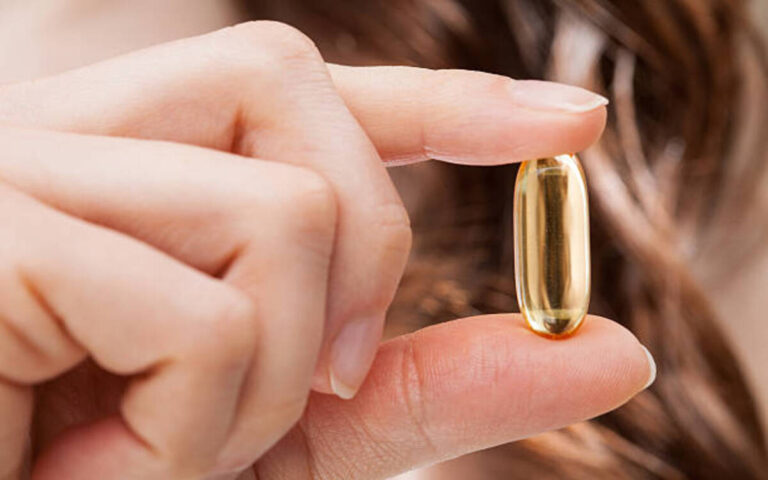

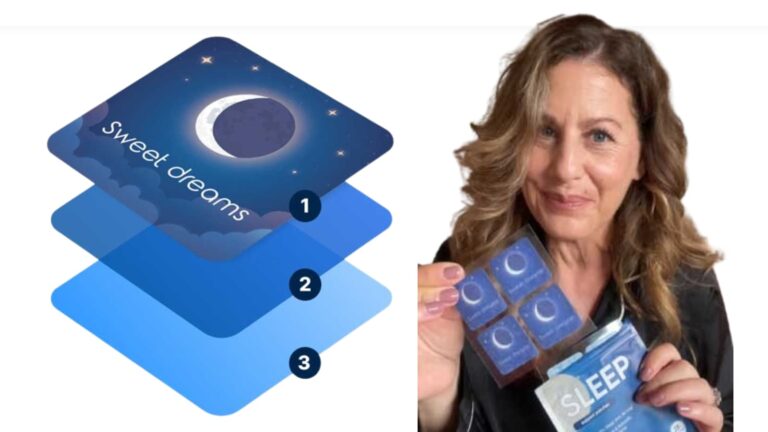

![Struggling With Sleepless Nights? This Patch Works in 30 Minutes—Guaranteed 21 I Cant Sleep What Do I Do? ] Wacth This Video] Sleep Secret](https://healthfactsjournal.com/wp-content/uploads/2025/04/i-cant-sleep-what-do-i-do-768x480.jpg)
